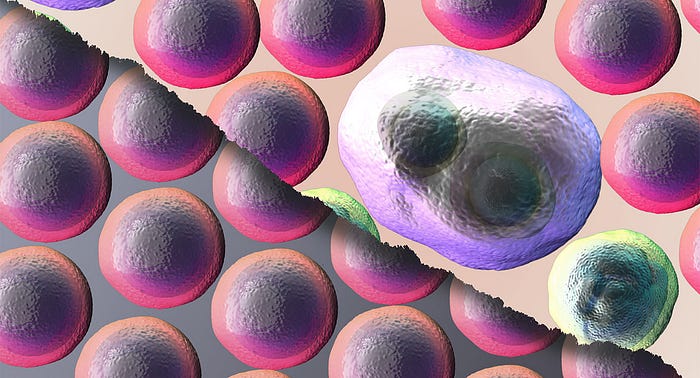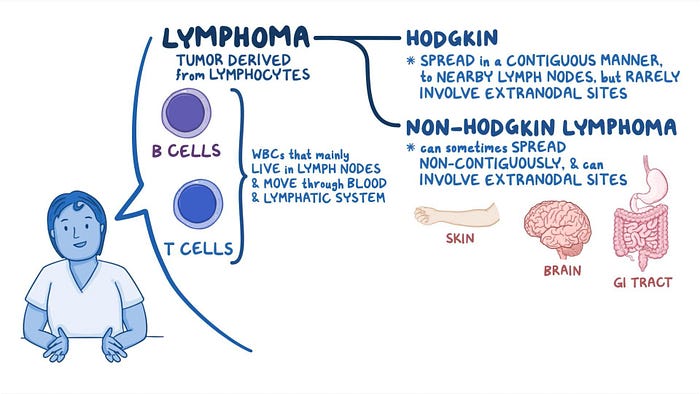- “Empowering Emergency Medicine Physicians”
- “Queue Management Software and Hospitalists in Modern Healthcare”
- “Enhancing-Pediatric-Infectious-Disease-Care”
- “Revolutionizing-Geriatric-Care”
- “Optimizing-Patient-Care-in-Pediatric-Rheumatology”
- “Pediatric-Pulmonology-Care”
- “Revolutionizing-Pediatric-Gastroenterology”
- “Enhancing-Pediatric-Neurology-Care”
- “Optimizing-Pediatric-Cardiology”
- “Enhancing-Pediatric-Endocrinology-Care”
- “Empowering-Neonatologists-with-EMR-Software”
- “Pediatrics-in-Focus”
- “Empowering-Neurologists-with-Electronic-Prescriptions”
- “Streamlining-Dermatology-Practice”
- “Streamlining-Psychiatry-Practice”
- “A-Game-Changer-for-Infectious-Disease-Specialists”
- “Allergist/Immunologist-Practices-with-QME-EMR-and-Hospital-Management-Systems”
- “Empowering-Hematologists-and-Revolutionizing-Healthcare-Management”
- “Optimizing-Healthcare-with-HMIS”
- “Transforming-Healthcare-with-Endocrinologist”
- “Healthcare-Management-with-QMe-EMR-for-Nephrologists”
- “Revolutionizing-Healthcare-Management-with-Cardiologist”
- “Streamlining-Operations-with-Queue-Management-Software”
- “Optimizing-Healthcare-Delivery”
- “Transforming-Healthcare-Management”
- HMIS And Decision Support Systems
- Dengue Unveiled: An Overview of Causes, Symptoms, and Prevention.
- Dengue Fever: Unraveling the Mosquito-Borne Menace.
- HMIS-and-Continuity-of-Care
- Project-Management-for-Successful-HMIS
- Catalysts of Wellness: The Transformative Power of Diagnosis and Screening in Healthcare
- Patient-Data-Management
- Guardians of Healthcare: The Vital Role of Fraud Detection in Ensuring Ethical Care
- Unlocking Insights
- Healthcare in the Digital Age: The History Of Development Of HMIS
- Transforming Healthcare
- Safeguarding-HMIS-Data
- HMIS-Integration-Challenges
- ANXIETY UNVEILED: CONQUERING FEARS AND CULTIVATING CALM.
- BEYOND THE BLUE: EMBRACING LIGHT ON THE PATH OF DEPRESSION.
- BEYOND THE BLUE: EMBRACING LIGHT ON THE PATH OF DEPRESSION.
- HMIS and Resource Allocation
- HMIS Data Accuracy and Integrity
- SOOTHING THE SILENT PAIN: UNDERSTANDING VULVODYNIA.
- Impact of HMIS on OPD Operations
- In Patient Management Through Health Management
- WITHIN THE SHADOWS: UNDERSTANDING BRAIN TUMOURS FROM WITHIN
- HMIS-and-Health-Insurance-Integration
- HMIS-Data-Analytics-for-Preventive-Care
- SILENT INTRUDERS: UNRAVELLING THE MYSTERIES OF PELVIC INFLAMMATORY DISEASE
- BREAKING FREE: OVERCOMING THE HURDLE OF URINARY INCONTINENCE
- “HMIS and Doctor-Patient Communication”
- HEALING INSIGHTS: THE POWER OF THE HOSPITAL MANAGEMENT INFORMATION SYSTEM.
- SOLVING THE OVARIAN PUZZLE:UNDERSTANDING OVARIAN CYST INSIDE OUT
- Usability And User Experience In HMIS
- WARRIOR’S BATTLE: TRIUMPHING OVER UTERINE CANCER
- POLYCYSTIC OVARY PUZZLE: UNRAVELLING THE ENIGMA OF PCOS
- Unlocking-the-Potential-of-HMIS-Data-for Medical-Research-and-Healthcare-Policy-Enhancement
- Feminine Health Unplugged: Empowering Women in Vaginal Infection Awareness
- Revitalizing Feminine Comfort: A Journey Through Vaginal Wellness.
- HMIS Vendor Selection Guide
- UNDERSTANDING FIBROIDS: NAVIGATING THE INTRICACIES OF UTERINE HEALTH.
- Best Practices for Data Migration in Healthcare Management Information Systems (HMIS)
- CONCEIVING HOPE: NAVIGATING THE JOURNEY OF INFERTILITY
- MENSTRUAL IRREGULARITIES: CAUSES AND TREATMENT
- RISING ABOVE: EMPOWERING WOMEN WITH PELVIC ORGAN PROLAPSE
- Leveraging HMIS for Enhanced Public Health Management and Disease Surveillance
- Challenges and Benefits of Implementing HMIS in Rural and Remote Healthcare Settings
- Securing Healthcare Continuity
- Pancreatic Cancer
- Leukemia
- Bladder Cancer
- Skin Cancer (Melanoma)
- COLORECTAL CANCER
- All about Prostate Cancer
- Fighting out the Disease of Lung Cancer
- Advances in Breast Cancer Treatment: A Comprehensive Guide
- Autism Spectrum Disorder (ASD)
- EHR SYMPHONY: HARMONIZING HEALTHCARE THROUGH ELECTRONIC RECORDS .
- Understanding Testicular Cancer: Detection, Treatment And Awareness.
- Childhood Obesity
- Kawasaki Disease
- Eczema (Atopic Dermatitis)
- Understanding Bone Cancer: A Brief Overview.
- Virtual Healing: Navigating Healthcare Through Telemedicine and Telehealth.
- Attention-Deficit/Hyperactivity Disorder (ADHD)
- PELVIC PAIN:CAUSES SYMPTOMS AND PREVENTIONS
- Type 1 Diabetes: Causes, Symptoms, and Treatment
- Gastroesophageal Reflux Disease (GERD)
- Battling Pneumonia: Unveiling the Stealthy Invader of the Lungs
- Unravelling the Complexity of Allergic Reactions: Understanding, Managing, and Thriving
- Rashes (Eczema, Dermatitis)
- UNDERSTANDING CERVICAL DYSPLASIA: CAUSES, SYMPTOMS AND MANAGEMENT
- Chicken Pox
- Endometriosis Unmasked: A Closer Look at the Silent Struggle
- Croup
- Hand, Foot and Mouth Disease (HFMD)
- THE DAWNING OF A NEW ERA: EMBRACING THE JOURNEY OF MENOPAUSE
- Urinary Tract Infections (UTIs)
- Strep Throat (Streptococcal Pharyngitis)
- Understanding Otitis Media(Ear Infection)
- 28th July In medical history!!
- Influenza (Flu) - Symptoms, Prevention and Management
- 27th July In medical history!!
- Respiratory Syncytial Virus (RSV) Infection
- SIGNIFICANCE AND ADVANTAGES OF HMIS: A DETAILED ANALYSIS
- Beyond Boundaries: Transforming Healthcare with Virtual Reality
- TRACK YOUR LIFE : A DETAILED UNDERSTANDING ON HEALTH MONITORING SYSTEM
- EXPLORING BENEATH THE SURFACE: UNDERSTANDING BARTHOLIN CYSTS AND ABSCESSES
- GUARDING GUT HEALTH: YOUR GUIDE TO POTENTIAL CROHN’S DISEASE PREVENTION.
- PATHWAYS OF HOPE: NAVIGATING THE CHALLENGES OF ESOPHAGEAL CANCER
- Gastric Battles: Confronting Stomach Cancer Head-On.
- HMIS IN SMALL CLINICS: A STEP TO A BETTER FUTURE
- Harmonizing Your Cycle: A Journey to Menstrual Health and Balance.
- Respiratory Syncytial Virus (RSV) Infection
- GUARDING OUR INTIMATE WORLD: A CLOSER LOOK AT STI
- Real-World HMIS Implementation Case Studies: Using Data to Transform Healthcare
- Gastroenteritis (Stomach Flu)
- Asthama - The Anatomy Of Breathing
- Influenza - A Silent Intruder
- Breast Cancer
Lymphoma
Comprehensive Overview of Hodgkin and Non-Hodgkin Lymphoma: Understanding, Diagnosis, Treatment, and Advances

Lymphoma
The lymphatic system, a crucial component of the immune system, is where lymphoma, a complicated group of blood malignancies, develop. Hodgkin lymphoma (HL) and non-Hodgkin lymphoma (NHL) are two of its two main subtypes. These cancers include aberrant lymphocyte proliferation, which are important immune cells. Reed-Sternberg cells are the hallmark of HL, whereas NHL has a wide range of subtypes. Both forms can result in fever, tiredness, and swollen lymph nodes. Biopsies and staging are necessary for diagnoses, which direct treatment options. Chemotherapy, radiation, targeted medicines, and stem cell transplantation are among the available treatments. The results have improved as a result of advances in molecular research and customized therapy. For efficient care and early discovery of lymphoma, it is essential to raise awareness of the disease.
Understanding Lymphatic System
The lymphatic system, a vital part of healthcare, is essential for maintaining fluid balance and immunological function. This complex network of lymph nodes, blood arteries, and lymphocytes serves as a barrier against illnesses and infections. White blood cells called lymphocytes play a critical role in warding off viruses. Additionally, the system aids in the transportation of waste and necessary nutrients. Healthcare practitioners are aware of its importance in the diagnosis and treatment of a number of illnesses, including lymphoma. For comprehensive healthcare and ensuring general wellbeing, it is crucial to comprehend the structure and functioning of the lymphatic system.
Hodgkin Lymphoma (HL)
Definition, prevalence, and historical context
A group of malignancies that affect the lymphatic system and are caused by lymphocytes are referred to as lymphomas. It includes both Hodgkin and non-Hodgkin lymphomas (HL and NHL). Prevalence varies by type, with NHL being more common. Lymphoma has changed through time from an obscure illness to a clear-cut medical condition. Early remedies had few options, but developments like chemotherapy and tailored medications have led to better results. The significance of continued research in improving patient care is shown by the fact that understanding the historical background of lymphoma helps in recognizing the advancements made in its diagnosis and treatment.
Pathophysiology and etiology
Because of genetic abnormalities that alter their regulation, lymphocytes, primarily B-cells or T-cells, develop out of control throughout the pathophysiology of lymphoma. The actual cause is still unknown; potential contributing variables include genetic predisposition, immune system impairment, infections including the Epstein-Barr virus, and environmental factors. DNA damage and aberrant cell cycle regulation may result from these conditions. For targeted treatments to be effective and to advance our understanding of disease mechanisms, it is essential to comprehend the complex interplay between genetic and environmental variables in the etiology of lymphoma.
Clinical presentation
The clinical appearance of lymphoma, which is important in healthcare, varies greatly depending on the type and stage. Prominent indicators include painless swollen lymph nodes, fever, night sweats, and unintentional weight loss, collectively termed B symptoms. The specific characteristics of Hodgkin lymphoma are associated with the different Reed-Sternberg cells. Subtypes of non-Hodgkin lymphoma may cause localized or systemic symptoms that interfere with daily life. Healthcare personnel must be able to recognize these various manifestations in order to facilitate rapid diagnosis, individualized treatment, and best patient management. This highlights the critical importance of clinical knowledge in lymphoma care within the healthcare framework.
Diagnosis and staging
Thorough evaluations are required for lymphoma diagnosis and staging, which are essential to hospital administration. Cell types can be determined through biopsies, frequently of afflicted lymph nodes. The extent of an illness is determined through imaging techniques like PET and CT scans. Staging systems like Ann Arbor (HL) or Lugano (NHL) classify progression. Modern molecular diagnostics help to improve diagnosis and forecast treatment outcomes. The development of efficient treatment plans, improving hospital administration, and improving patient outcomes all depend on accurate diagnosis and staging.
Treatment options
Options for treating lymphoma include a variety of modalities and are essential to healthcare management. Cancer cells are the target of chemotherapy and radiation therapy. Specific molecular indicators are addressed by targeted medicines. Immunotherapy improves the immune system’s ability to combat lymphoma cells. Immune systems that have been destroyed are revived through stem cell transplantation. Healthcare management involves comprehensive assessment to determine the most suitable treatment regimen. Personalized medicine tailors’ therapies based on individual factors, optimizing efficacy while minimizing side effects. Multidisciplinary collaboration between healthcare professionals ensures well-coordinated treatment plans, emphasizing the pivotal role of healthcare management in orchestrating these interventions for optimal patient care.
Non-Hodgkin Lymphoma (NHL)

The term Non-Hodgkin Lymphoma (NHL) refers to a broad category of blood malignancies that develop from lymphocytes.
Unlike Hodgkin lymphoma, NHL lacks Reed-Sternberg cells and includes numerous subtypes, each varying in aggressiveness and behavior. Tissue biopsies, immunohistochemistry, and molecular assays are used in diagnosis to provide accurate classification.
Treatment strategies range from watchful waiting for indolent cases to aggressive therapies like chemotherapy, targeted treatments, and immunotherapy. Assessing illness characteristics, choosing the best therapies, and monitoring potential problems are all crucial tasks performed by healthcare professionals. Given the diversity of NHL, a patient-centered healthcare approach is essential to ensuring individualized interventions and the greatest results for afflicted patients.
Similarities and Differences between Hodgkin and Non-Hodgkin Lymphoma

Although they both originate from lymphocytes, Hodgkin lymphoma (HL) and Non-Hodgkin lymphoma (NHL) are fundamentally different from one another. Both manifest as enlarged lymph nodes, night sweats, and weight loss, yet HL’s unique Reed-Sternberg cells distinguish it histologically. The complexity of NHL includes a number of subgroups, making classification and therapy more challenging. HL tends to be more localized initially, while NHL often involves multiple nodes or extranodal sites. Treatment approaches differ; HL often involves targeted radiation, while NHL relies on chemotherapy, immunotherapy, and targeted agents. Understanding these similarities and variances is essential for a precise diagnosis and the best choice of treatment, highlighting the value of customized strategies in the management of these various lymphomas.
Ongoing Research and Advances

Critical developments in lymphoma research are supported by cutting-edge medical software. Genetic mutations are identified via genomic investigations, facilitating tailored treatments. Novel immunotherapies like CAR T-cell therapy show promise in enhancing immune response against lymphoma cells. A Data analysis is made easier by healthcare software, leading to more accurate treatment recommendations and patient management. By customizing interventions based on patient characteristics, precision medicine enhances results. Early detection and monitoring are improved by liquid biopsies and advanced imaging techniques. Innovation is fueled by teamwork between scientists, doctors, and software developers in the healthcare industry, providing a complete toolkit to combat lymphoma. Being on the cutting edge of these innovations guarantees that patients get the most recent, most efficient treatments, demonstrating the synergy between medical advancement and technical innovation.
Support and Quality of Life
Comprehensive treatment must prioritize patient support and quality of life. Support on an emotional and psychological level is just as important as medical care. Support groups offer a forum for exchanging stories and coping mechanisms, which reduces feelings of loneliness. Healthcare providers provide advice on how to manage side effects of treatment and resolve concerns. Palliative care concentrates on managing symptoms and pain in order to provide comfort. Attention to mental health and wellness through counseling and mindfulness techniques promotes resilience. Yoga and art therapy are examples of integrative therapies that improve overall health. Recognizing how lymphoma affects patients’ life and offering all-encompassing care guarantees that patients not only recover physically but also emotionally, empowering them on their journey.
Conclusion

In conclusion, a diverse strategy is needed to successfully navigate the intricacies of Hodgkin and Non-Hodgkin lymphoma. Recognizing their distinctive characteristics facilitates prompt diagnosis and specialized treatment. As we approach major developments, continued research sets the door for cutting-edge treatments. Crucial to this journey is comprehensive healthcare management. From precise diagnosis to individualized treatment plans, QMe Hospital Management and Information System is essential in coordinating patient care. These systems improve patient outcomes by streamlining data processing, facilitating treatment choices, and merging medical expertise with cutting-edge software. Together, these initiatives move us closer to a time when lymphoma patients receive individualized treatment plans and comprehensive care.
- “Empowering Emergency Medicine Physicians”
- “Queue Management Software and Hospitalists in Modern Healthcare”
- “Enhancing-Pediatric-Infectious-Disease-Care”
- “Revolutionizing-Geriatric-Care”
- “Optimizing-Patient-Care-in-Pediatric-Rheumatology”
- “Pediatric-Pulmonology-Care”
- “Revolutionizing-Pediatric-Gastroenterology”
- “Enhancing-Pediatric-Neurology-Care”
- “Optimizing-Pediatric-Cardiology”
- “Enhancing-Pediatric-Endocrinology-Care”
- “Empowering-Neonatologists-with-EMR-Software”
- “Pediatrics-in-Focus”
- “Empowering-Neurologists-with-Electronic-Prescriptions”
- “Streamlining-Dermatology-Practice”
- “Streamlining-Psychiatry-Practice”
- “A-Game-Changer-for-Infectious-Disease-Specialists”
- “Allergist/Immunologist-Practices-with-QME-EMR-and-Hospital-Management-Systems”
- “Empowering-Hematologists-and-Revolutionizing-Healthcare-Management”
- “Optimizing-Healthcare-with-HMIS”
- “Transforming-Healthcare-with-Endocrinologist”
- “Healthcare-Management-with-QMe-EMR-for-Nephrologists”
- “Revolutionizing-Healthcare-Management-with-Cardiologist”
- “Streamlining-Operations-with-Queue-Management-Software”
- “Optimizing-Healthcare-Delivery”
- “Transforming-Healthcare-Management”
- HMIS And Decision Support Systems
- Dengue Unveiled: An Overview of Causes, Symptoms, and Prevention.
- Dengue Fever: Unraveling the Mosquito-Borne Menace.
- HMIS-and-Continuity-of-Care
- Project-Management-for-Successful-HMIS
- Catalysts of Wellness: The Transformative Power of Diagnosis and Screening in Healthcare
- Patient-Data-Management
- Guardians of Healthcare: The Vital Role of Fraud Detection in Ensuring Ethical Care
- Unlocking Insights
- Healthcare in the Digital Age: The History Of Development Of HMIS
- Transforming Healthcare
- Safeguarding-HMIS-Data
- HMIS-Integration-Challenges
- ANXIETY UNVEILED: CONQUERING FEARS AND CULTIVATING CALM.
- BEYOND THE BLUE: EMBRACING LIGHT ON THE PATH OF DEPRESSION.
- BEYOND THE BLUE: EMBRACING LIGHT ON THE PATH OF DEPRESSION.
- HMIS and Resource Allocation
- HMIS Data Accuracy and Integrity
- SOOTHING THE SILENT PAIN: UNDERSTANDING VULVODYNIA.
- Impact of HMIS on OPD Operations
- In Patient Management Through Health Management
- WITHIN THE SHADOWS: UNDERSTANDING BRAIN TUMOURS FROM WITHIN
- HMIS-and-Health-Insurance-Integration
- HMIS-Data-Analytics-for-Preventive-Care
- SILENT INTRUDERS: UNRAVELLING THE MYSTERIES OF PELVIC INFLAMMATORY DISEASE
- BREAKING FREE: OVERCOMING THE HURDLE OF URINARY INCONTINENCE
- “HMIS and Doctor-Patient Communication”
- HEALING INSIGHTS: THE POWER OF THE HOSPITAL MANAGEMENT INFORMATION SYSTEM.
- SOLVING THE OVARIAN PUZZLE:UNDERSTANDING OVARIAN CYST INSIDE OUT
- Usability And User Experience In HMIS
- WARRIOR’S BATTLE: TRIUMPHING OVER UTERINE CANCER
- POLYCYSTIC OVARY PUZZLE: UNRAVELLING THE ENIGMA OF PCOS
- Unlocking-the-Potential-of-HMIS-Data-for Medical-Research-and-Healthcare-Policy-Enhancement
- Feminine Health Unplugged: Empowering Women in Vaginal Infection Awareness
- Revitalizing Feminine Comfort: A Journey Through Vaginal Wellness.
- HMIS Vendor Selection Guide
- UNDERSTANDING FIBROIDS: NAVIGATING THE INTRICACIES OF UTERINE HEALTH.
- Best Practices for Data Migration in Healthcare Management Information Systems (HMIS)
- CONCEIVING HOPE: NAVIGATING THE JOURNEY OF INFERTILITY
- MENSTRUAL IRREGULARITIES: CAUSES AND TREATMENT
- RISING ABOVE: EMPOWERING WOMEN WITH PELVIC ORGAN PROLAPSE
- Leveraging HMIS for Enhanced Public Health Management and Disease Surveillance
- Challenges and Benefits of Implementing HMIS in Rural and Remote Healthcare Settings
- Securing Healthcare Continuity
- Pancreatic Cancer
- Leukemia
- Bladder Cancer
- Skin Cancer (Melanoma)
- COLORECTAL CANCER
- All about Prostate Cancer
- Fighting out the Disease of Lung Cancer
- Advances in Breast Cancer Treatment: A Comprehensive Guide
- Autism Spectrum Disorder (ASD)
- EHR SYMPHONY: HARMONIZING HEALTHCARE THROUGH ELECTRONIC RECORDS .
- Understanding Testicular Cancer: Detection, Treatment And Awareness.
- Childhood Obesity
- Kawasaki Disease
- Eczema (Atopic Dermatitis)
- Understanding Bone Cancer: A Brief Overview.
- Virtual Healing: Navigating Healthcare Through Telemedicine and Telehealth.
- Attention-Deficit/Hyperactivity Disorder (ADHD)
- PELVIC PAIN:CAUSES SYMPTOMS AND PREVENTIONS
- Type 1 Diabetes: Causes, Symptoms, and Treatment
- Gastroesophageal Reflux Disease (GERD)
- Battling Pneumonia: Unveiling the Stealthy Invader of the Lungs
- Unravelling the Complexity of Allergic Reactions: Understanding, Managing, and Thriving
- Rashes (Eczema, Dermatitis)
- UNDERSTANDING CERVICAL DYSPLASIA: CAUSES, SYMPTOMS AND MANAGEMENT
- Chicken Pox
- Endometriosis Unmasked: A Closer Look at the Silent Struggle
- Croup
- Hand, Foot and Mouth Disease (HFMD)
- THE DAWNING OF A NEW ERA: EMBRACING THE JOURNEY OF MENOPAUSE
- Urinary Tract Infections (UTIs)
- Strep Throat (Streptococcal Pharyngitis)
- Understanding Otitis Media(Ear Infection)
- 28th July In medical history!!
- Influenza (Flu) - Symptoms, Prevention and Management
- 27th July In medical history!!
- Respiratory Syncytial Virus (RSV) Infection
- SIGNIFICANCE AND ADVANTAGES OF HMIS: A DETAILED ANALYSIS
- Beyond Boundaries: Transforming Healthcare with Virtual Reality
- TRACK YOUR LIFE : A DETAILED UNDERSTANDING ON HEALTH MONITORING SYSTEM
- EXPLORING BENEATH THE SURFACE: UNDERSTANDING BARTHOLIN CYSTS AND ABSCESSES
- GUARDING GUT HEALTH: YOUR GUIDE TO POTENTIAL CROHN’S DISEASE PREVENTION.
- PATHWAYS OF HOPE: NAVIGATING THE CHALLENGES OF ESOPHAGEAL CANCER
- Gastric Battles: Confronting Stomach Cancer Head-On.
- HMIS IN SMALL CLINICS: A STEP TO A BETTER FUTURE
- Harmonizing Your Cycle: A Journey to Menstrual Health and Balance.
- Respiratory Syncytial Virus (RSV) Infection
- GUARDING OUR INTIMATE WORLD: A CLOSER LOOK AT STI
- Real-World HMIS Implementation Case Studies: Using Data to Transform Healthcare
- Gastroenteritis (Stomach Flu)
- Asthama - The Anatomy Of Breathing
- Influenza - A Silent Intruder
- Breast Cancer